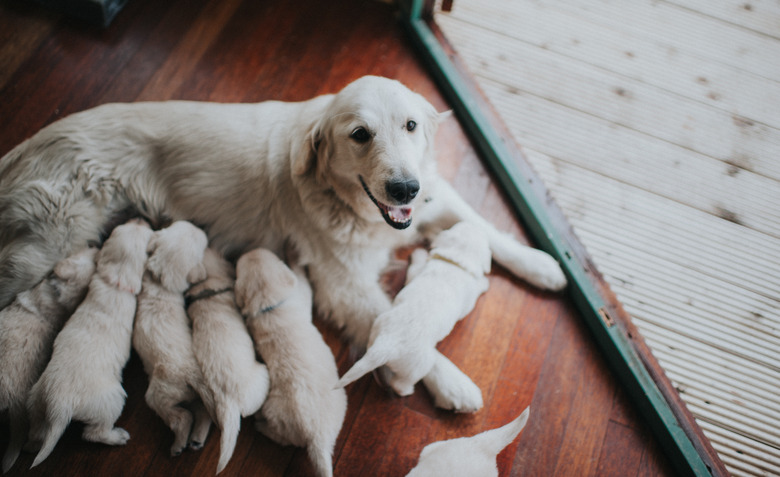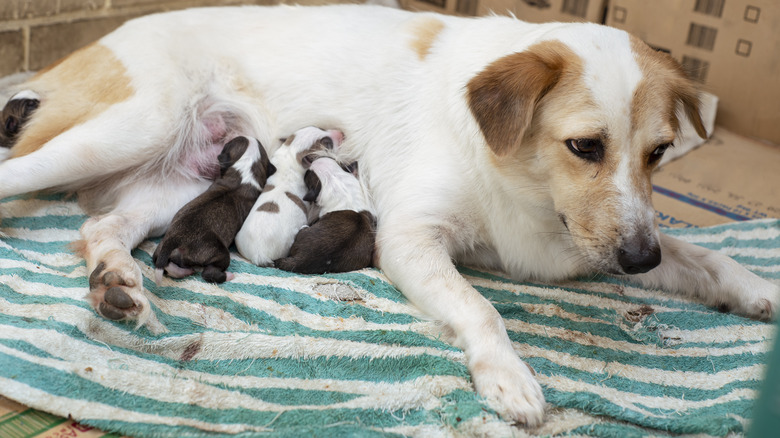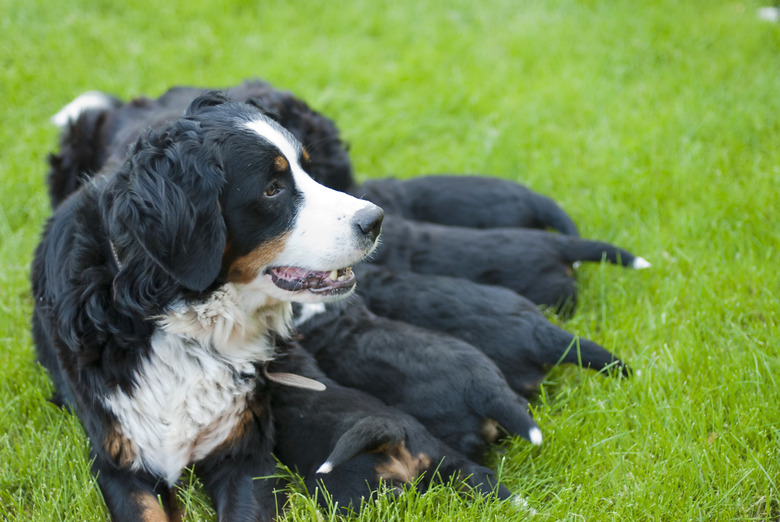Signs & Symptoms Of Labor In A Dog
You've got the whelping box prepared, full of clean towels and tucked away in a quiet part of the house. You have all your vet's contact information on hand, as well as the number of the nearest emergency animal hospital. Your dog's due date is approaching, but she is still acting pretty much the way she always does, albeit with a bigger belly. You're afraid to leave the house, just in case, but if your dog isn't showing signs of imminent birth, you can probably run some errands without fear of missing the big event.
Body temperature drops in dog labor
Body temperature drops in dog labor
As your dog's delivery approaches, your vet has likely instructed you to take your dog's temperature morning and evening via a rectal thermometer. A drop in temperature is a sign that labor will start within 24 hours. A dog's temperature is normally between 101.5-and-102 degrees Fahrenheit. When it drops to 100 or below, that's one of the signs a dog is going into labor soon.
While body temperature is among the most reliable indicators for the start of labor, not all expectant canines want to deal with having a thermometer up their rectum twice daily. As Purina points out, you want to make the mom-to-be as comfortable as possible, so if this ritual isn't working out, don't worry. Don't stress your girl. There are other ways to tell if the puppies are coming.
The early signs of dog labor
The early signs of dog labor
If your dog stops eating, that's a sign the puppies are on their way. She may not eat for a couple of days before going into labor, and she may also vomit. The American Kennel Club mentions that shortly before giving birth, the mother may exhibit emotional signs of labor approaching, like nesting behavior, trying to make a comfortable place to deliver. Steer her toward the whelping box, but if she's determined to give birth in another area, let her do so as long as it's safe and clean.
Some dogs may feel comfortable enough to give birth near their people. If that's what she wants to do, put lots of old newspapers down or towels that you can clean, and hope for the best. You can move the puppies to the whelping box post-birth.
Look for behavioral changes
Look for behavioral changes
As the first labor pains begin, you may notice behavioral changes in your dog. She may become especially clingy, not wanting you out of her sight. She may begin to pant heavily. Dogs often become restless, relentlessly pacing around the room, and they may start shivering.
Stay by her during this period to offer comfort and support. If this is her first pregnancy, she doesn't really know what is about to occur. This initial stage of labor, which goes on internally, may last up to 18 hours. Keep other animals and young children away from the dog during this time.
Active straining stage
Active straining stage
The next stage of labor starts with active straining and the birth of puppies. Your dog might strain for between 10 and 30 minutes for each puppy. As each one arrives, their water sac will break, emitting a greenish fluid. If your dog strains for more than an hour, that's a red alert, and she needs emergency veterinary attention.
It's not unusual for the dog to rest for a few hours after delivering the first few puppies. However, if no more puppies arrive after about four hours and you think there are still puppies inside her, contact your vet.
The final stage of dog labor
The final stage of dog labor
The last stage of dog labor occurs after all the puppies are out of the womb. The mother will expel anything left in the uterus, including placentas and fluids. During the birth, keep track of all the placentas, some of which she may eat. A retained placenta is dangerous and possibly fatal, so call your vet if you think there is still a placenta inside your dog.
Make sure all the puppies find a nipple and receive that all-important first meal of colostrum. You can give mom some water and dog food, and take her outside briefly to eliminate. If everything seems fine, let mother and puppies bond and rest, and get some rest yourself. You'll have plenty to do in the coming days.


